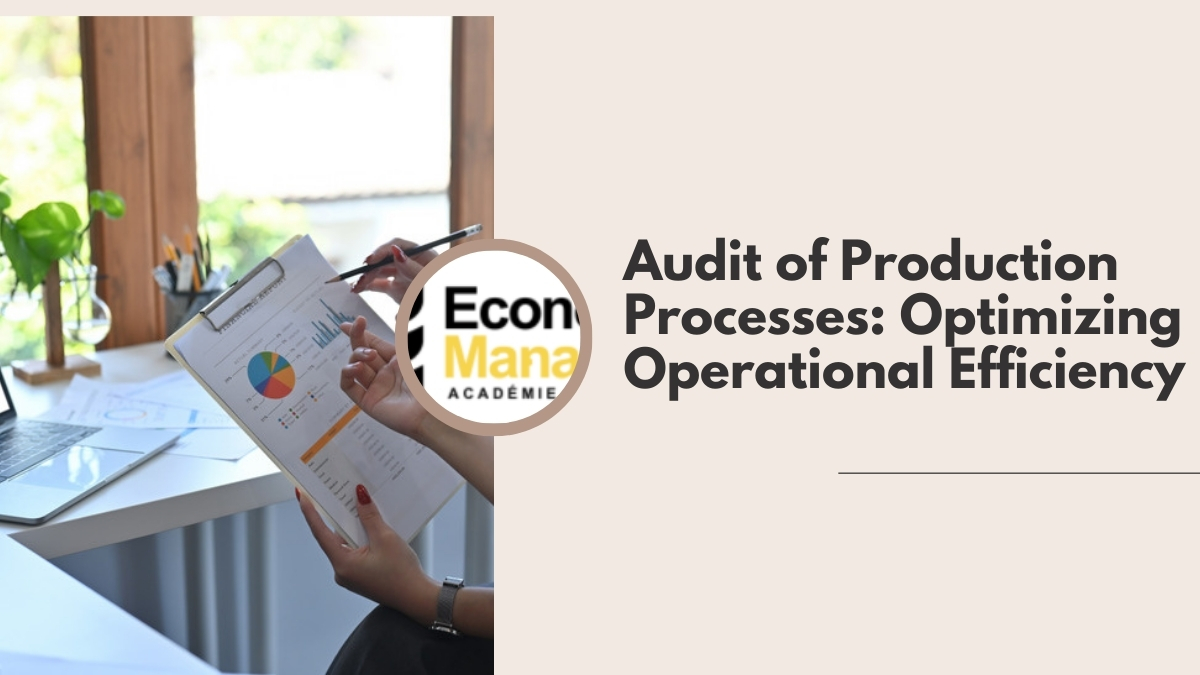In an era defined by increasing scrutiny of corporate behavior, ethical auditing has emerged as a critical tool for businesses and organizations. Scandals and unethical practices have shaken public trust, highlighting the need for proactive measures to ensure ethical conduct and compliance. Ethical auditing serves as this diagnostic and preventive measure, helping organizations uphold their values and maintain their social license to operate.
This article will delve into the significance of ethical auditing, exploring its role in detecting and addressing unethical behaviors, ensuring compliance, and building a robust ethical culture. We will also provide practical tips and a step-by-step framework for conducting effective ethical audits, ultimately contributing to the organization’s long-term success and positive reputation.
Table de matières
Understanding Ethical Auditing: Definition and Purpose
What is an Ethical Audit?
An ethical audit is a systematic and comprehensive examination of an organization’s practices, systems, and behaviors to evaluate its adherence to ethical standards and norms. It involves scrutinizing how well a company follows its internal rules and complies with external regulations and widely accepted ethical principles.
Ethical audits are inherently qualitative, requiring a nuanced understanding of various perspectives within the organization. They often go hand in hand with financial or operational audits, as ethical lapses can lead to compliance issues. However, it’s important to recognize that a company may be legally compliant but still engage in unethical practices, which underscores the unique role of ethical auditing.
Why Conduct an Ethical Audit?
Uncovering Impropriety: Ethical audits serve as an early warning system, detecting and addressing unscrupulous or illegal activities within an organization. This includes unfair treatment of employees, breaches of regulations related to working hours and safety, and any behaviors that contradict internal guidelines and accepted ethical standards. Ethical audits provide an opportunity to rectify these issues before they cause significant damage.
Ensuring Compliance: Ethical audits ensure that an organization’s practices align with its internal code of conduct and policies, as well as external ethical guidelines. This harmony between values and actions is essential for maintaining credibility and trust with stakeholders.
Building an Ethical Culture: Regular ethical audits demonstrate a commitment to ethical behavior and help foster a culture of integrity. They send a clear message to employees and stakeholders that fairness and ethical conduct are prioritized, thereby contributing to a positive reputation.
Components of an Ethical Audit: What to Focus On
Common Focus Areas: Ethical audits typically examine how a company treats its employees, including equal opportunities, grievance redressal processes, and discrimination prevention. However, they can also extend to customer relations, environmental impact, financial disclosures, conflicts of interest, and bidding practices.
Comparison of Guidelines and Behaviors: A key objective is to compare internal guidelines (code of conduct, policies) with actual behaviors and practices. This involves reviewing records, conducting interviews with employees and managers, and observing workplace processes to identify any discrepancies or unethical behaviors.
Auditing Team Composition: Internal auditing teams often consist of a nominated auditor, an ethics and compliance officer, a legal representative, and an HR manager. This diverse team ensures that any ethical or legal issues are addressed appropriately, and that disciplinary actions, education, or training integration are implemented effectively.
Internal vs. External Auditors: Ethical audits can be conducted internally as part of a regular cycle or in response to changing risk profiles. Alternatively, external auditors can be appointed for enhanced objectivity, especially when addressing specific contractual requirements or highly sensitive matters.
Step-by-Step Guide to Conducting an Ethical Audit
Step 1: Define the Scope and Objectives
Clearly define the scope and objectives of the ethical audit. This includes identifying the specific areas of focus (e.g., employee treatment, environmental impact) and determining the criteria for evaluation, such as compliance with internal guidelines and external regulations.
Step 2: Gather Relevant Information
Collect and review relevant documents, records, and data. This may include internal guidelines, policies, employee handbooks, financial reports, customer feedback, and previous audit reports. The information-gathering process provides a foundation for identifying potential issues and areas of non-compliance.
Step 3: Conduct Interviews and Observations
Interview a representative sample of employees and managers to gain insights into their experiences and perspectives. Ask open-ended questions about their understanding of ethical standards, personal observations of ethical behaviors, and any concerns or suggestions they may have. Combine this with direct observations of workplace processes and interactions to identify potential red flags.
Step 4: Analyze and Identify Issues
Analyze the information gathered from documents, interviews, and observations to identify any discrepancies, unethical behaviors, or areas of non-compliance. This analysis may uncover issues such as discriminatory practices, unfair treatment of employees or customers, or breaches of environmental regulations.
Step 5: Develop Action Plans
Based on the issues identified, develop comprehensive action plans to address them. This may involve implementing new policies or procedures, providing additional training or education, disciplining employees, or making necessary changes to operations. Ensure that action plans are realistic and achievable.
Step 6: Implement and Monitor
Work with relevant stakeholders to implement the action plans effectively. Communicate the changes clearly throughout the organization and provide any necessary training or support. Continuously monitor the impact of the implemented actions to ensure they are effective and sustainable.
Step 7: Follow-up and Continuous Improvement
Conduct follow-up audits or assessments to ensure that the issues have been adequately addressed and that ethical standards are being maintained. Ethical auditing should be an ongoing process, with regular reviews and updates to policies and procedures as needed.
Tips for Enhancing the Effectiveness of Ethical Audits
- Develop a Comprehensive Code of Ethics: Create a detailed code of ethics that outlines the organization’s values and specific guidance on ethical behavior. This provides a clear framework for auditing and ensures that employees understand the expected standards.
- Establish Metrics and Key Performance Indicators (KPIs): While ethical audits are qualitative, developing metrics and measurements can make the process more tangible. For example, consider setting ethics-related performance goals and tracking their achievement over time.
- Routine and Regular Audits: Conduct ethical audits at regular intervals to monitor continuous performance and uphold ethical standards. This demonstrates a consistent commitment to ethical behavior.
- Unannounced Spot Audits: In cases of suspected impropriety or to maintain vigilance, conduct unannounced audits to observe standard day-to-day behaviors. This prevents employees from altering their actions and provides a more accurate snapshot of the organization’s ethical climate.
- Impartial and Diverse Auditing Teams: Assemble auditing teams that are reliable, diverse, and capable of acting impartially. A diverse team brings different perspectives and helps identify a broader range of ethical issues. Alternatively, consider external auditors for enhanced objectivity.
Benefits of Ethical Auditing: Impact on Organizations
Detecting and Addressing Unethical Behavior: Ethical audits provide a mechanism to identify and rectify behavioral issues before they escalate. They offer opportunities for improvement and initiate important conversations about ethical standards.
Building a Positive Reputation: Regular ethical audits contribute to a positive public image and enhance the organization’s reputation. They demonstrate a commitment to fairness, transparency, and integrity, attracting stakeholders and building trust.
Improving Decision-Making: Ethical audits provide valuable insights that can inform decision-making processes. They help identify areas where ethical standards may be compromised and enable leaders to make more informed and ethical choices.
Risk Mitigation: Ethical audits help organizations identify and manage risks associated with unethical behaviors. By addressing these risks proactively, organizations can avoid potential financial losses, legal consequences, and damage to their reputation.
Conclusion
Ethical auditing is a critical tool for organizations to uphold their values, ensure compliance, and build a strong ethical culture. By conducting comprehensive audits, businesses can foster a positive reputation, enhance decision-making processes, and mitigate risks. Through regular evaluation and improvement, organizations can create a culture of integrity that benefits all stakeholders, from employees to customers and investors.
Frequently Asked Questions (FAQs)
1. What is the main purpose of an ethical audit?
The primary purpose of an ethical audit is to ensure that an organization’s practices, systems, and behaviors align with its internal ethical guidelines and external ethical standards. It serves to detect and address unethical or illegal activities, ensure compliance, and build a positive ethical culture.
2. How do ethical audits benefit an organization?
Ethical audits provide numerous benefits, including the early detection and prevention of unethical behaviors, improved decision-making through valuable insights, enhanced reputation and public trust, and effective risk management. They contribute to the long-term success and sustainability of the organization.
3. How often should ethical audits be conducted?
The frequency of ethical audits depends on the organization’s size, complexity, and specific needs. However, it is generally recommended to conduct routine ethical audits at regular intervals to monitor continuous performance. Unannounced spot audits can also be conducted to address specific concerns or maintain vigilance.
4. What are the key components of an effective ethical audit team?
An effective ethical audit team should be diverse, impartial, and reliable. It should consist of individuals with different areas of expertise, such as auditing, ethics and compliance, legal, and human resources. This ensures a comprehensive evaluation of the organization’s practices and enhances the objectivity of the auditing process.
5. What are the potential consequences of neglecting ethical auditing?
Neglecting ethical auditing can have severe repercussions, including reputational damage, legal consequences, and financial losses. It may also lead to a decline in employee morale and trust, as well as a disconnect between the organization’s stated values and actual practices.







